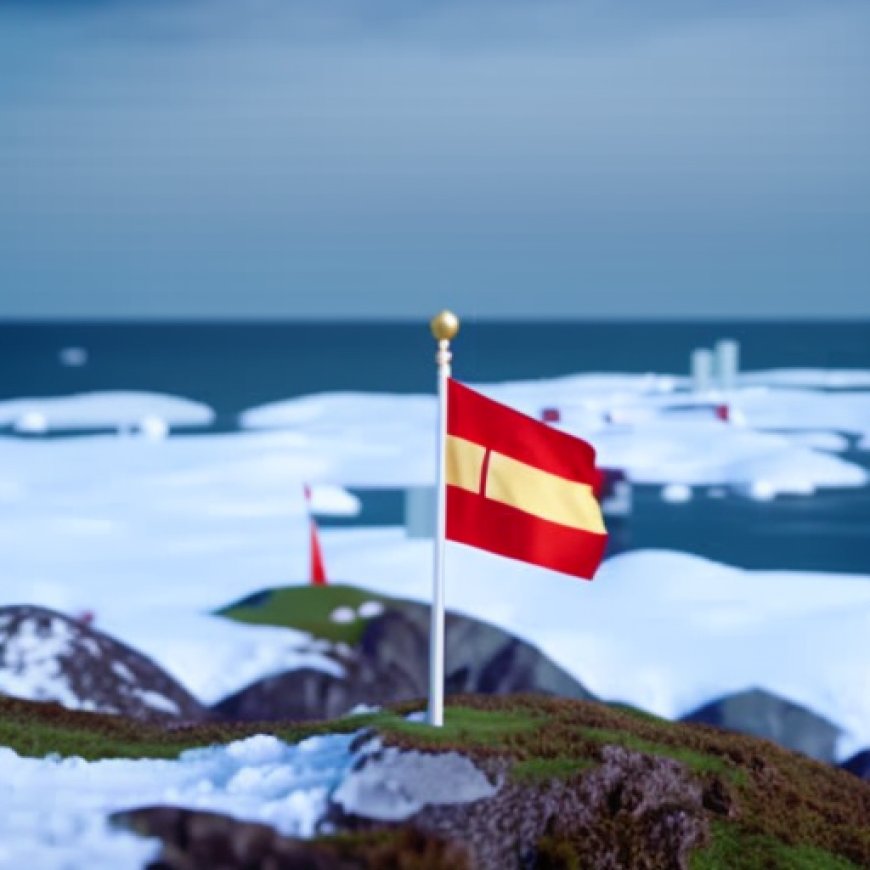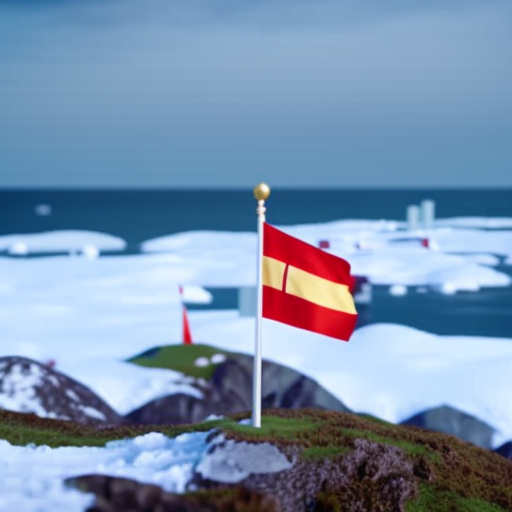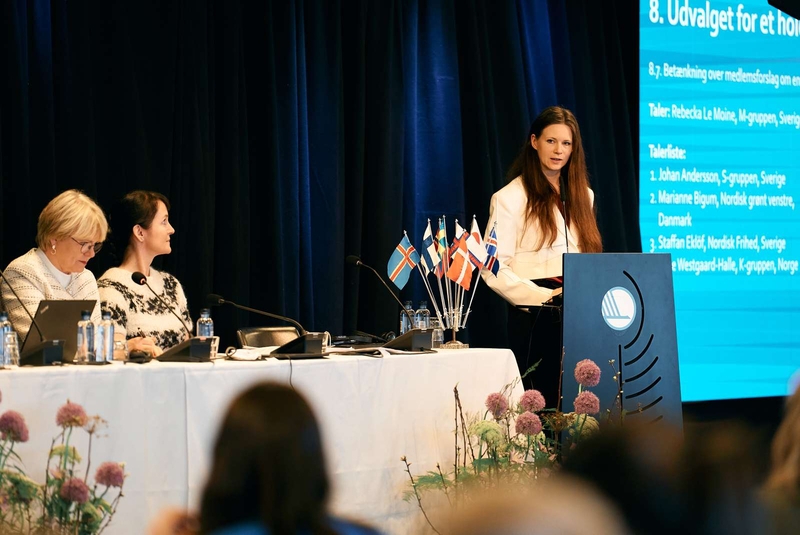Nordic Council: The Nordic Region must have a joint plan for the Baltic Sea
Nordic Council: The Nordic Region must have a joint plan for the Baltic Sea Nordic cooperation


The Nordic Council Calls for a Joint Plan for a Healthy Baltic Sea

The Nordic Council will recommend that the Nordic Council of Ministers develop a joint plan for a healthy Baltic Sea. This decision was made during the spring Session of the Nordic Council in Tórshavn, Faroe Islands.
Emphasizing the Sustainable Development Goals (SDGs)
The proposal by the Nordic Council aligns with the Sustainable Development Goals (SDGs), particularly Goal 14: Life Below Water, which aims to conserve and sustainably use the oceans, seas, and marine resources for sustainable development.
Building upon the Baltic Sea Action Plan (BSAP)
The Nordic Council suggests that the Nordic plan should be based on the Baltic Sea Action Plan (BSAP) from 2021 but with increased efforts and ambition. The BSAP outlines various initiatives to address the challenges faced by the Baltic Sea region.
- Implementing Existing Plans
The Nordic Council emphasizes the need for the Nordic countries to take the lead in implementing existing plans. The Baltic Sea Action Plan was updated in 2021, and many of its positive initiatives should be realized by 2030. However, significant action is required for successful implementation.
- Harmonization of Legislation
- Common Nordic Position
The Nordic Council also calls for the harmonization of legislation in the maritime sector and the establishment of a common Nordic position in the European Union (EU) and Baltic contexts. These measures aim to enhance cooperation and coordination among the Nordic countries and contribute to the overall improvement of the Baltic Sea’s health.
Achieving a Cleaner Baltic Sea
Despite previous efforts and regional strategies, the Baltic Sea remains one of the most polluted marine areas globally. The Nordic Council expresses its concern over this situation and urges the Nordic governments to take immediate action.
“It’s disheartening, and I’m very pleased that the entire Nordic Council is recommending that the Nordic governments take action now,” says Rebecka Le Moine, member of the Nordic Council’s Committee for a Sustainable Nordic Region.
SDGs, Targets, and Indicators Identified in the Article
| SDGs | Targets | Indicators |
|---|---|---|
| SDG 14: Life Below Water | Target 14.1: By 2025, prevent and significantly reduce marine pollution of all kinds, particularly from land-based activities, including marine debris and nutrient pollution | No specific indicators mentioned in the article |
| SDG 17: Partnerships for the Goals | Target 17.16: Enhance the Global Partnership for Sustainable Development, complemented by multi-stakeholder partnerships that mobilize and share knowledge, expertise, technology, and financial resources, to support the achievement of the Sustainable Development Goals in all countries, in particular developing countries | No specific indicators mentioned in the article |
1. Which SDGs are addressed or connected to the issues highlighted in the article?
SDG 14: Life Below Water
The issue of marine pollution in the Baltic Sea is directly connected to SDG 14, which focuses on conserving and sustainably using the oceans, seas, and marine resources. The article highlights that the Baltic Sea is one of the most polluted marine areas in the world, indicating a need for action to prevent and reduce marine pollution.
SDG 17: Partnerships for the Goals
The Nordic Council’s recommendation for the Nordic Council of Ministers to develop a joint plan for a healthy Baltic Sea aligns with SDG 17, which emphasizes the importance of partnerships and collaboration to achieve the Sustainable Development Goals. The Nordic Council is calling for a collective effort among the Nordic countries to address the issue of marine pollution in the Baltic Sea.
2. What specific targets under those SDGs can be identified based on the article’s content?
Target 14.1: By 2025, prevent and significantly reduce marine pollution of all kinds, particularly from land-based activities, including marine debris and nutrient pollution
The article mentions that the Baltic Sea is one of the most polluted marine areas in the world, indicating a need to prevent and reduce marine pollution. The Nordic Council’s proposal for a joint plan for a healthy Baltic Sea aligns with this target as it aims to address the issue of marine pollution in the region.
Target 17.16: Enhance the Global Partnership for Sustainable Development, complemented by multi-stakeholder partnerships that mobilize and share knowledge, expertise, technology, and financial resources, to support the achievement of the Sustainable Development Goals in all countries, in particular developing countries
The Nordic Council’s recommendation for a joint plan for a healthy Baltic Sea reflects the need for enhanced partnerships and collaboration among the Nordic countries. This aligns with Target 17.16, which emphasizes the importance of multi-stakeholder partnerships to support the achievement of the Sustainable Development Goals.
3. Are there any indicators mentioned or implied in the article that can be used to measure progress towards the identified targets?
No specific indicators are mentioned or implied in the article that can be used to measure progress towards the identified targets. However, progress towards Target 14.1 can be measured through indicators such as the concentration of pollutants in the Baltic Sea, changes in marine biodiversity, and improvements in water quality. Progress towards Target 17.16 can be measured through indicators such as the establishment of collaborative frameworks, the mobilization of financial resources, and the sharing of knowledge and expertise among the Nordic countries.
Overall, the article highlights the need to address marine pollution in the Baltic Sea and emphasizes the importance of partnerships and collaboration to achieve this goal. However, it does not provide specific indicators to measure progress towards the identified targets.
Behold! This splendid article springs forth from the wellspring of knowledge, shaped by a wondrous proprietary AI technology that delved into a vast ocean of data, illuminating the path towards the Sustainable Development Goals. Remember that all rights are reserved by SDG Investors LLC, empowering us to champion progress together.
Source: norden.org

Join us, as fellow seekers of change, on a transformative journey at https://sdgtalks.ai/welcome, where you can become a member and actively contribute to shaping a brighter future.







